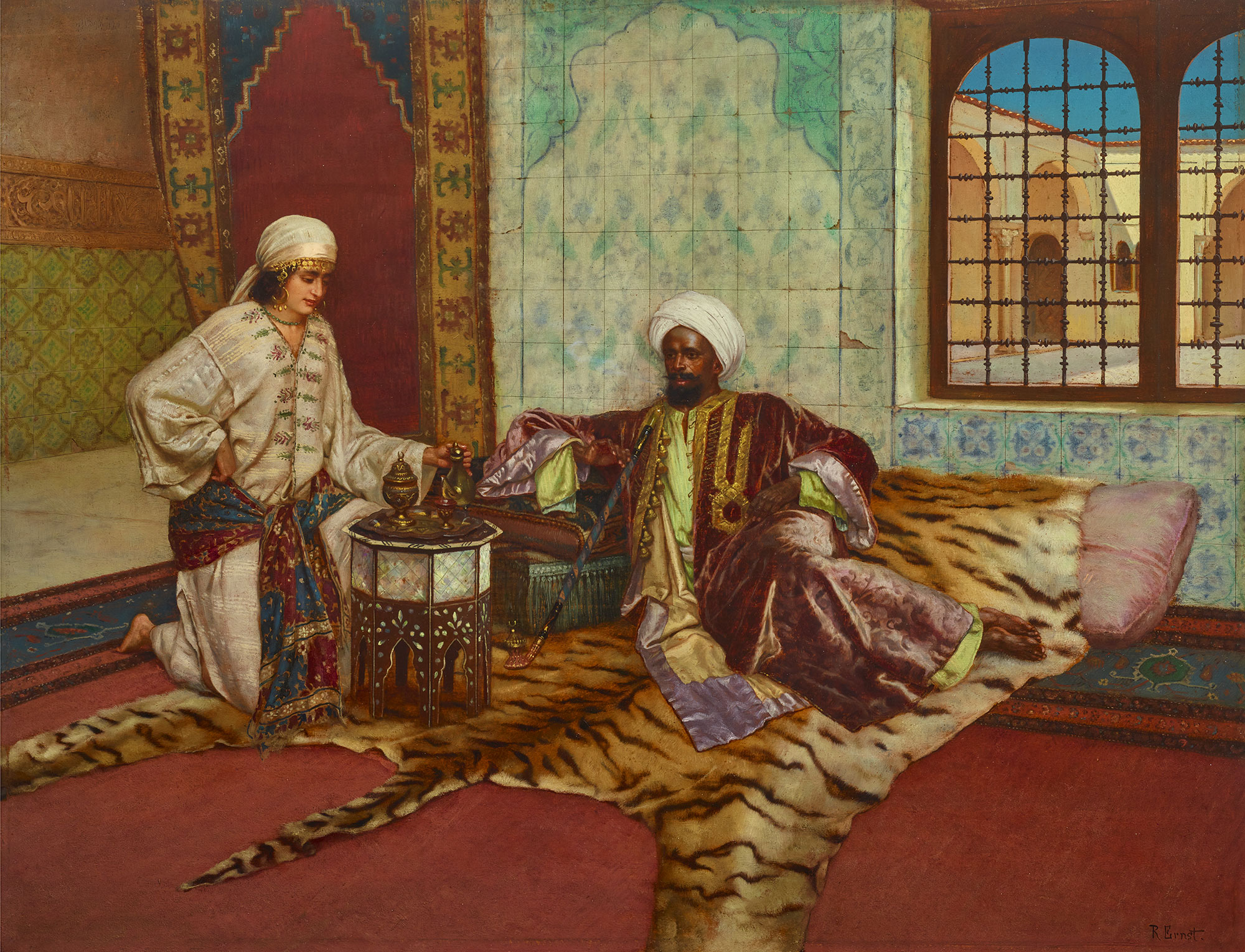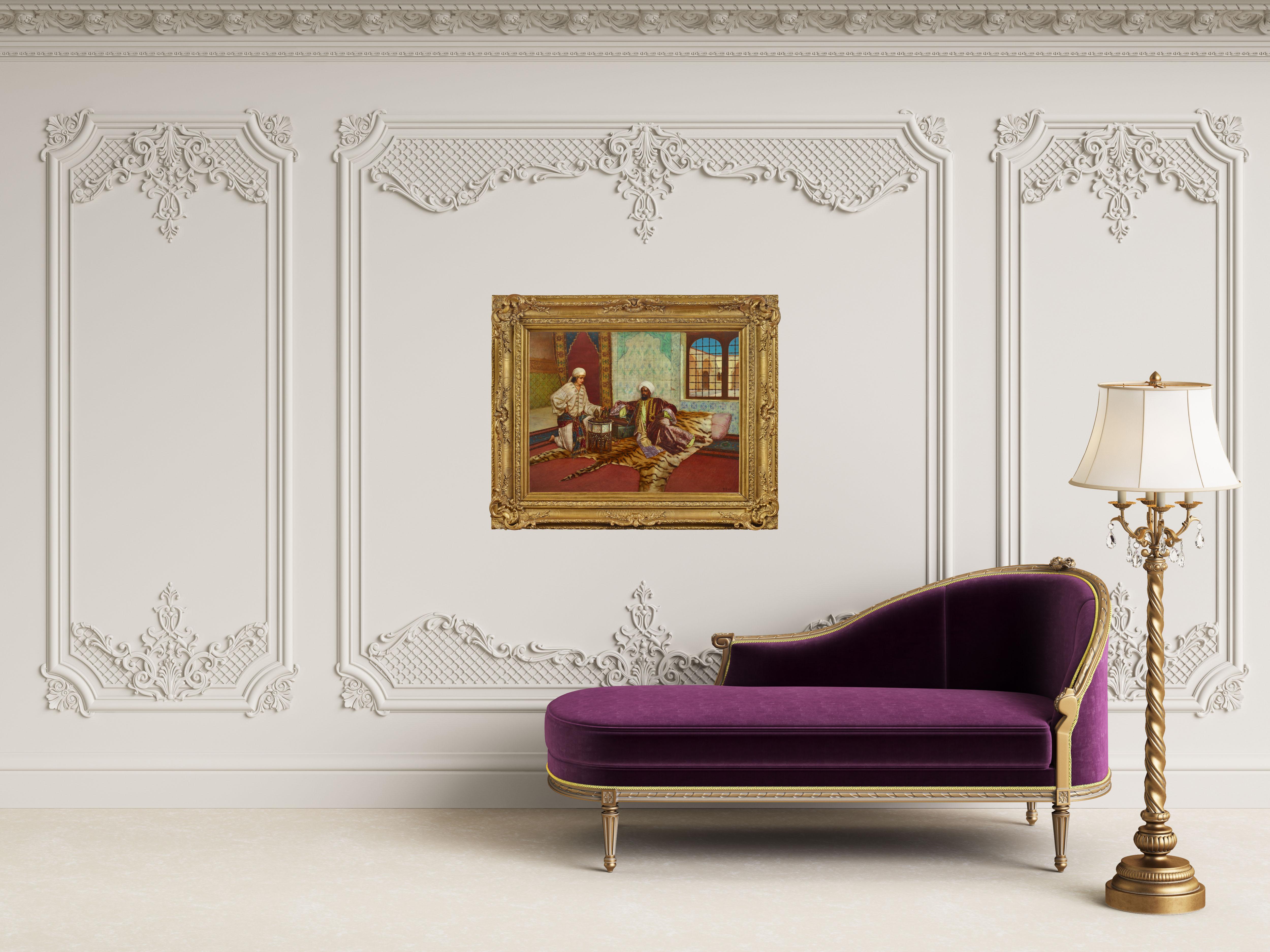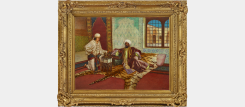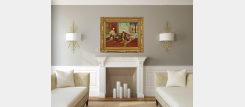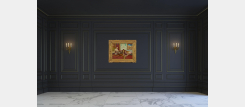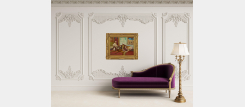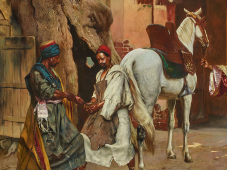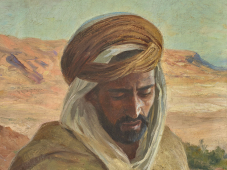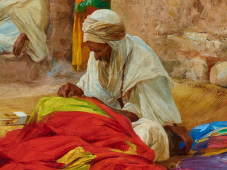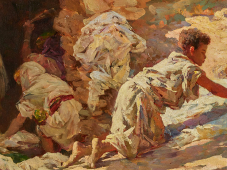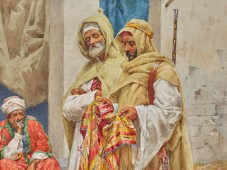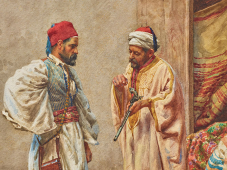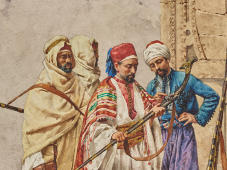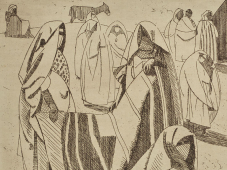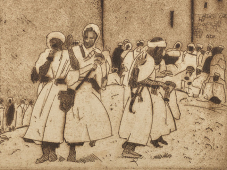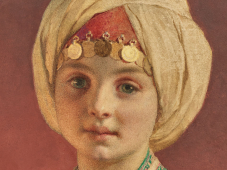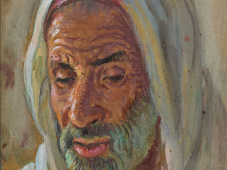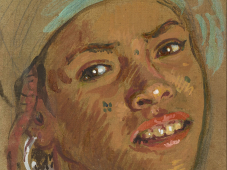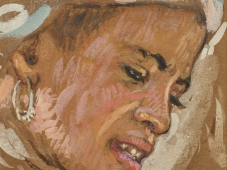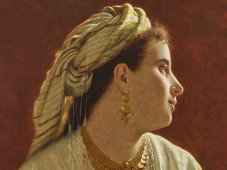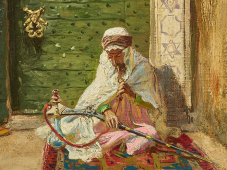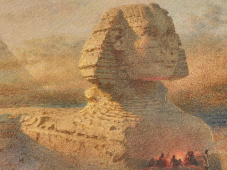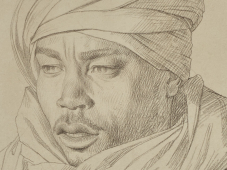The chibouk smoker
Description of the artwork
Rudolf Ernst is without doubt one of the most gifted French artists of his generation, along with Ludwig Deutsch. With his perfect technique, he captures every object, every material and every attitude with remarkable meticulousness, in compositions that are always perfectly constructed.
Here's a scene in which we catch a sultan at tea time in his rich interior. Comfortably seated on a large tiger skin and silky cushions on a carpet, he waits for tea to be served, holding his long Ottoman pipe in his hand. Over his green silk tunic, he wears a thick, richly embroidered purple velvet inner coat, the folded sleeves of which reveal a mauve silk lining. His white turban stands out against the earthenware tiles decorating the walls.
Through the two windows, we can make out the inner courtyard of the palace. A woman kneeling beside him pours tea into a cup. She has placed a tray on an octagonal table whose mother-of-pearl inlays shimmer in the light. The moment is calm and composed. Rudolf Ernst took particular care in depicting ceramics, an art to which he was very sensitive and whose technique he had acquired from the French master glassmaker and ceramist Léon Fargue in the early 1890s.
75008 Paris, France
Saturdays from 2 to 7 p.m.



